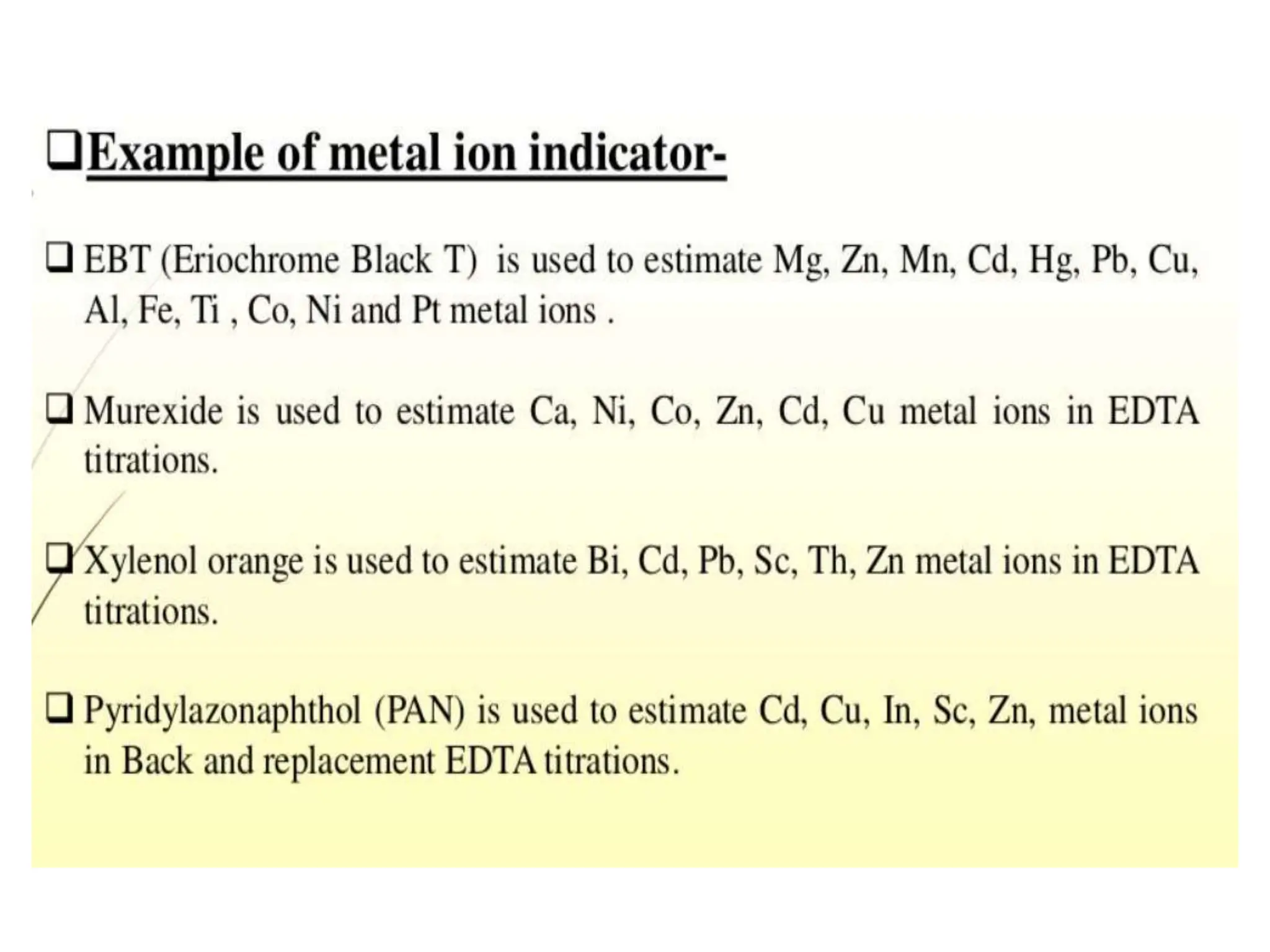Complexometric titration involves the titration of a metal ion with EDTA or other complexing agent until the metal ion forms a colored complex with an indicator. The end point is detected based on a color change. Common metal ions determined include mixtures of Ca2+, Mg2+, and Fe3+. EDTA forms stable complexes with metal ions, allowing their determination. The type of titration used, such as direct, back, or replacement titration, depends on the solubility of the metal-EDTA complex and whether the reaction is rapid or slow.
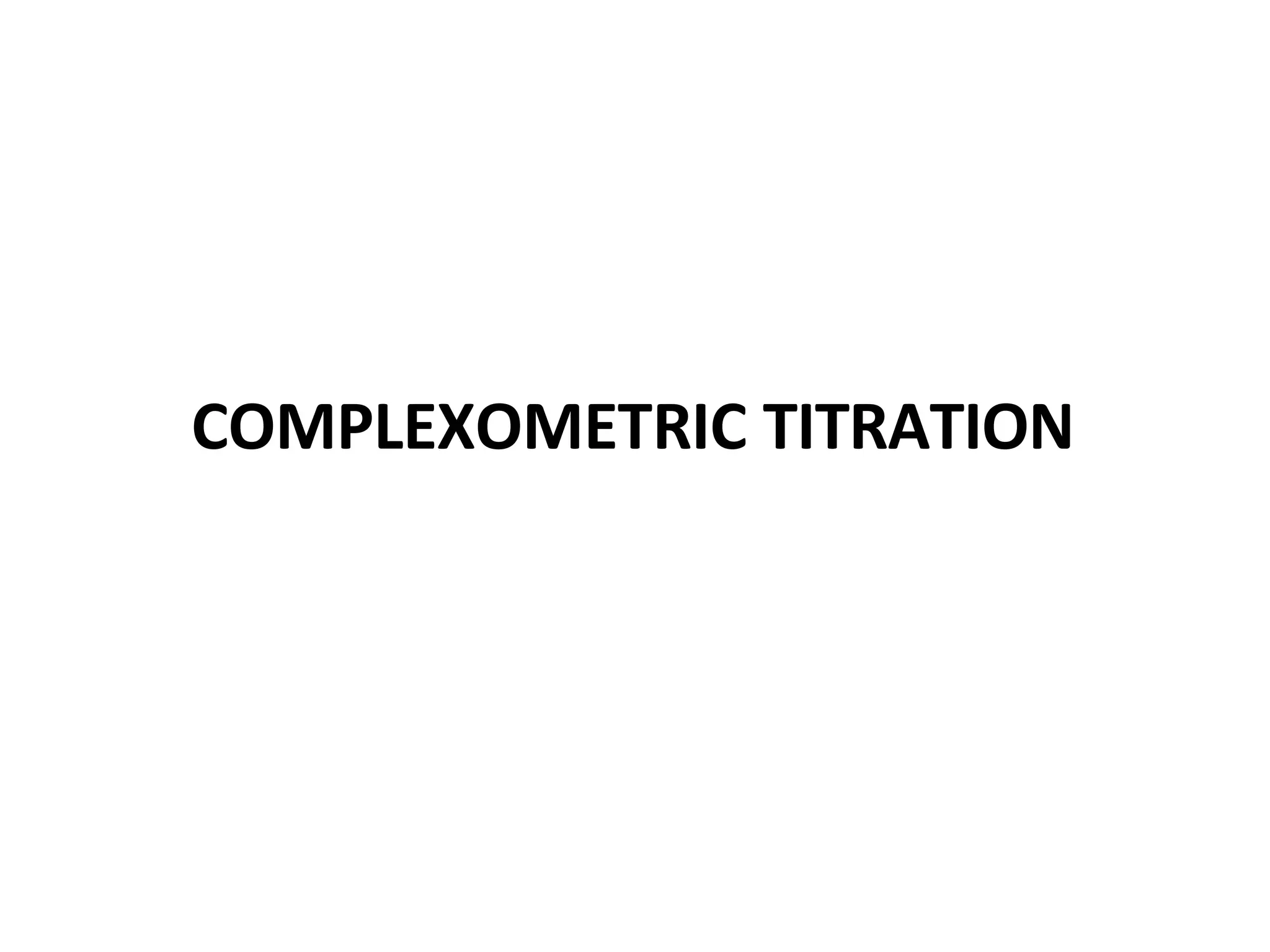
![• Complexometric titration is a form of volumetric titration in which the
formation of a colored complex is used to indicate the end point of a titration.
• The complexes are formed by the reaction of a metal ion (an acceptor, a central
atom or a cation) with an anion, a neutral molecule or very rarely a positive ion.
• Complexometric titrations are particularly useful for the determination of a
mixture of different metal ions in solution.
• An indicator capable of producing an distinct color change is usually used to
detect the end point of the titration.
• Complex is formed by the reaction of metal ion (Mn+) with either an anion
e.g. [Ag(CN)2]- or neutral molecule e.g. [Ag(NH3)2]+
• The metal ion is known as Central metal atom.
• The anion or neutral molecule is known as Ligand (L)
• Central metal atom = acts as Lewis acid (electron acceptor)
• Ligand = acts as Lewis base (electron donor)](https://image.slidesharecdn.com/complexometrictitration-240217053005-95b416b7/75/complexometric-titration-pharmaceutical-analysis-2-2048.jpg)
![• Coordinate bond (dative) = The bond formed between central metal atom (acceptor) and
the Ligand (donor)
• Dative bond is similar to covalent bond (formed of two electrons) But in dative bond the
electrons pair are donated from one atom to the other. The atom gives electron pair is
known as donor, while the atom accept electron pair is known as acceptor. The bond is
represented by an arrow () from donor to acceptor. NH3
NH3 Cu NH3
NH3
• Coordination number = The no. of coordinate bonds formed to a metal ion by its ligands.
• Characters of coordination number *
1- It is even number: 2 e.g. Ag+ , 4 e.g. Ni2+ , Cu2+ , 6 e.g. Fe3+ , Cr3+
2- It is usually double the charge of the metal.
3- The charge of a complex is the algebraic sum of the charges of the central ion and ligand
.. e.g.
• [Ag(CN)2] - Ag+ + 2 CN-
• 1 (+ve) + 2 (-ve) = 1 (-ve)
• e.g. [Fe(CN)6]3- Fe3+ + 6 CN-
3 (+ve) + 6 (-ve) = 3 (-ve)
• The higher the valence of metal ion the more stable the complex e.g.Ferricyanide is
more stable than Ferrocyanide](https://image.slidesharecdn.com/complexometrictitration-240217053005-95b416b7/75/complexometric-titration-pharmaceutical-analysis-3-2048.jpg)


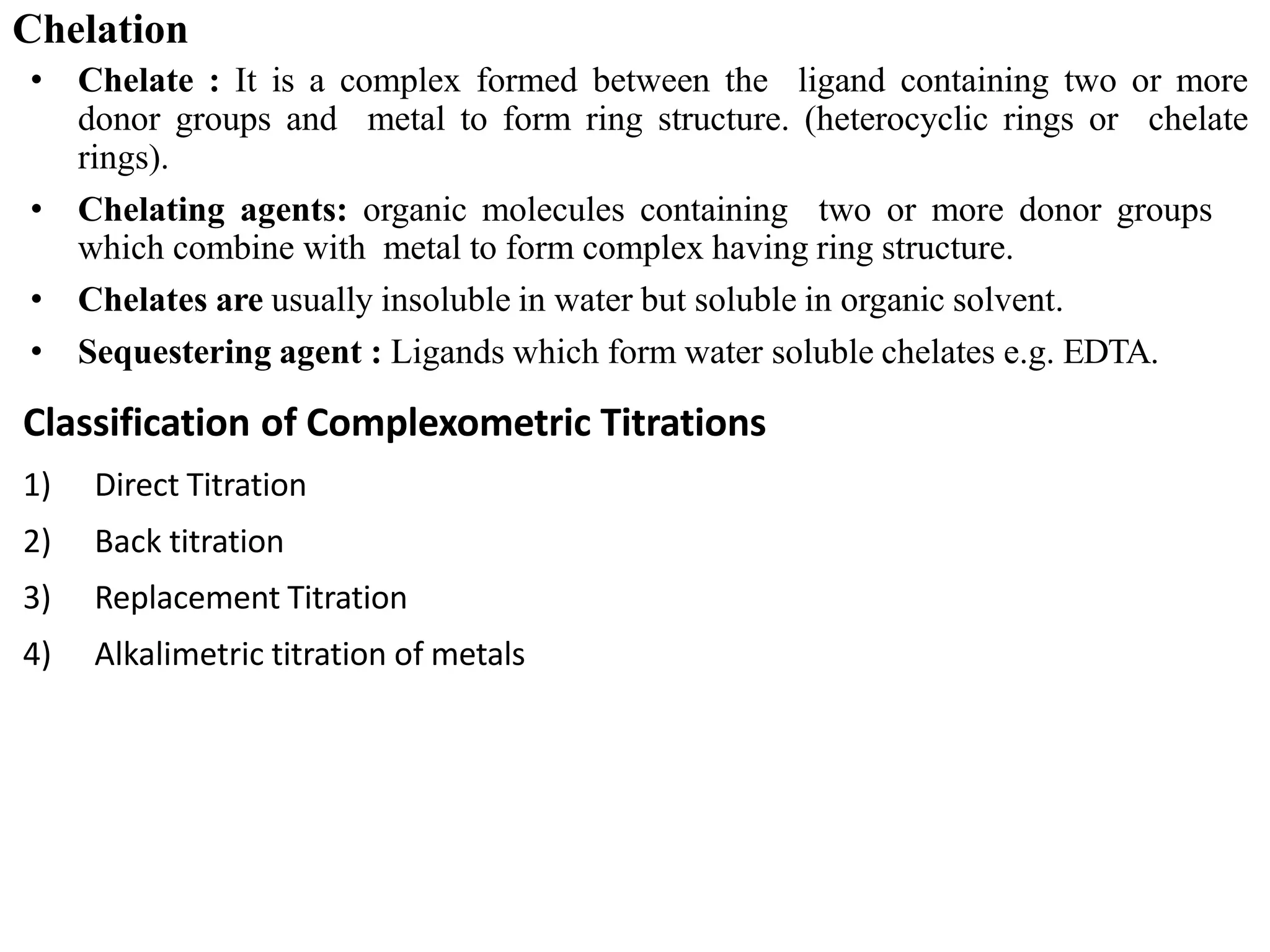
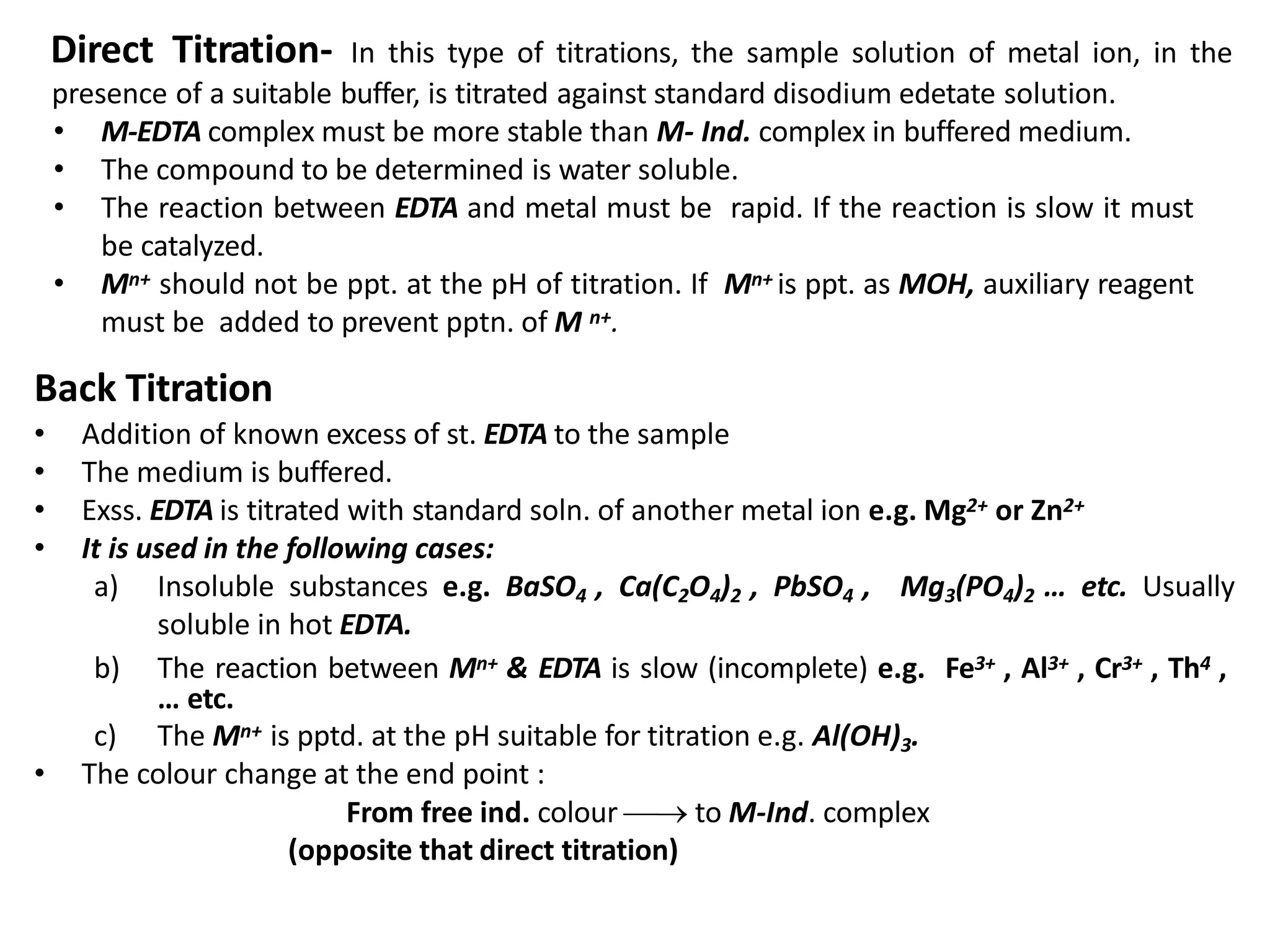
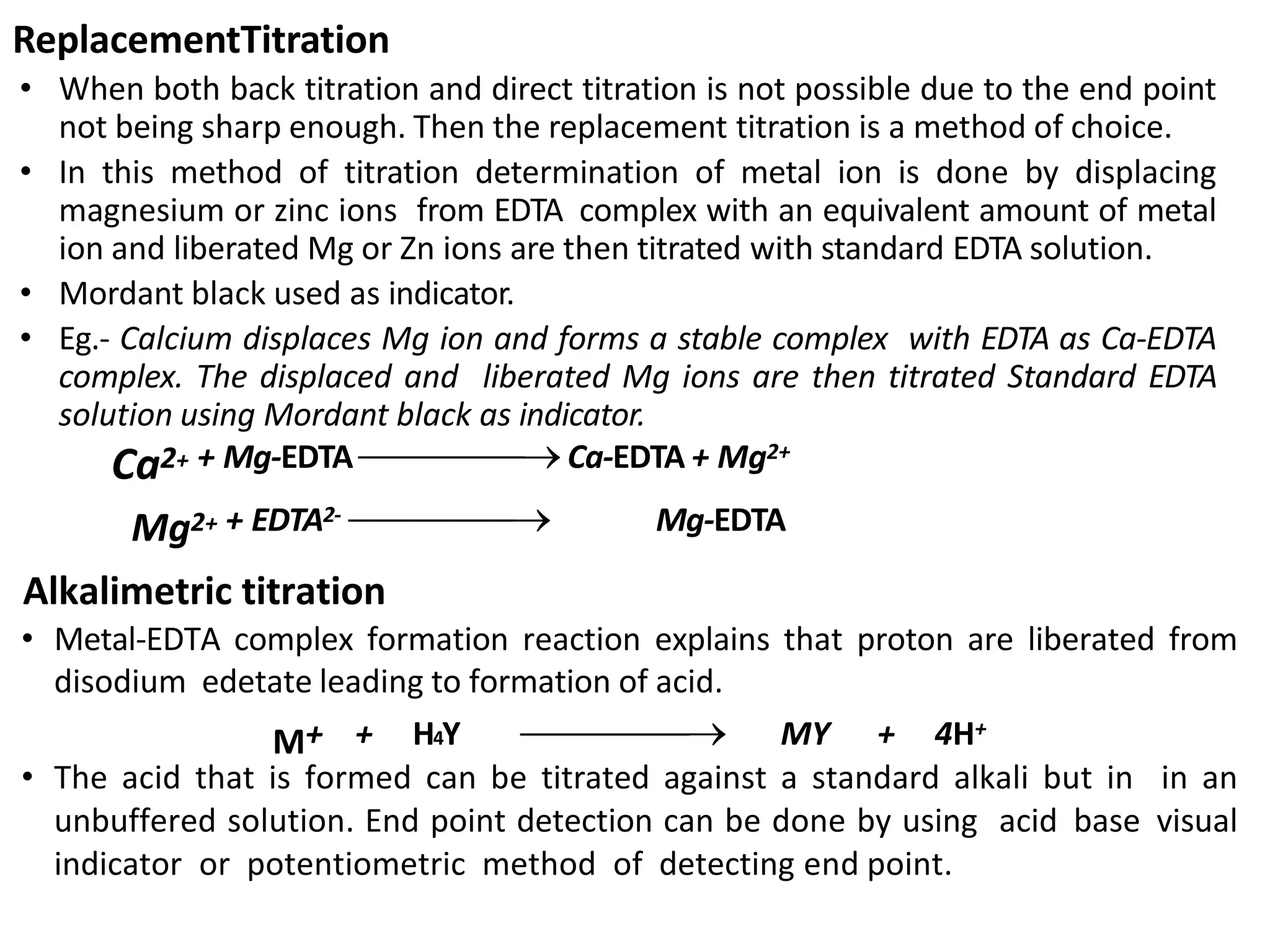
![ [M(CN)2] -
M+
M+
+ 2 CN -
+ 4 CN - [M(CN)4]3-
(B)- Triethanolamine :
N
CH2CH2OH
CH2CH2OH
CH2CH2OH
• Masking and demasking agent
• Masking agents: are reagents which prevent interfering ion from
reaction without physical separation.
• These reagents form complexes with interfering ions which are more
stable than complexes formed with ind. & EDTA.
• Examples of masking agent:
• (A)- KCN
• It is used as masking agent for Ag+ , Cu2+ , Cd2+ , Co2+ , Ni2+ , Zn2+ , … etc.
•
•
•
•
•
• - It is used as masking agent for Fe3+ , Al3+ and Sn2+
• (C) Fluoride (e.g. NH4F):
• - It is used as masking agent for Fe3+ and Al3+ to give hexafluoro complex
[FeF6]3- and [AlF6]3-
• (D)- Iodide (KI):
• - It is used as masking agent for Hg2+ to give tetraiodo complex (HgI4)](https://image.slidesharecdn.com/complexometrictitration-240217053005-95b416b7/75/complexometric-titration-pharmaceutical-analysis-9-2048.jpg)
![• Demasking agent : is the process in which masking substance
reveres back to its ability to take part in the reaction.
- are reagents which regain the ability of masked ion to enter
the reaction with ind. and EDTA.
• Example:
- The masking by CN– can be removed by:
- mixture of formaldehyde – acetic acid
-on addition of demasking agent to [Zn(CN)4]2- , Zn is liberated
and titrated.
• [Zn(CN)4]2- + 4 HCHO + 4 CH3COOH
(less stable)
•
•
Zn2+
CN
+ 4 CH2 + 4 CH3COO-
OH
Cyanohydrin
(more stable)](https://image.slidesharecdn.com/complexometrictitration-240217053005-95b416b7/75/complexometric-titration-pharmaceutical-analysis-10-2048.jpg)
